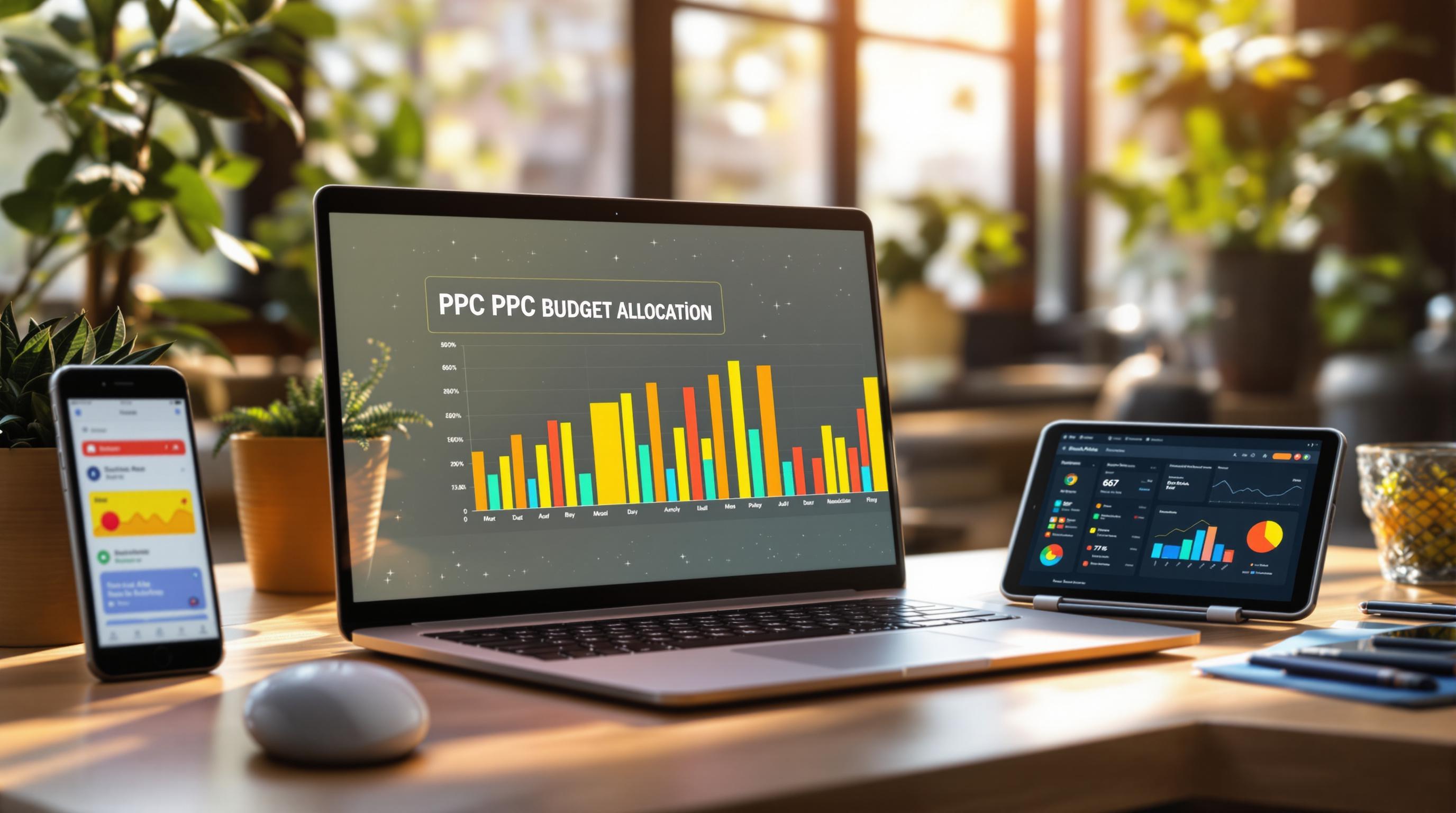Demographic data can boost your PPC campaigns by targeting the right audience based on traits like age, gender, income, and location. Campaigns using demographic targeting see 73% higher conversion rates. Here's what you need to know:
- What it is: Demographic targeting focuses ads on specific groups (e.g., age, gender, income).
- Why it matters: Increases relevance, improves conversion rates, and reduces wasted spend.
- How to set it up: Platforms like Google Ads and Meta Ads Manager let you adjust demographic settings to refine your audience.
- Optimize with data: Use metrics like CTR, conversion rates, and CPA to adjust bids and budgets for top-performing groups.
- Avoid mistakes: Don’t over-segment your audience, as this can limit reach and impact.
Demographic targeting works best when combined with other methods like geographic or interest-based targeting. Regularly review performance reports and tailor your ads to match audience preferences. Tools like DMPs and CDPs can further enhance your targeting while ensuring compliance with privacy standards.
Google Ads Demographic Targeting and Optimization Guide

What is Demographic Targeting in PPC?
Demographic targeting in PPC advertising is all about showing your ads to specific groups of people based on traits like age, gender, or income. Instead of focusing on what users are searching for or their online habits, this approach zeroes in on who they are.
Definition of Demographic Targeting
This method lets advertisers divide their audience by basic population traits. These characteristics are the building blocks for targeting options offered by various platforms.
Demographic Options on PPC Platforms
Most PPC platforms offer targeting based on:
- Age: Categories like 18-24, 25-34, 35-44, and so on.
- Gender: Male, Female, or Unknown.
- Income Levels: Available in select markets (23 globally).
- Parental Status: Whether the user is a parent or not.
- Education Level: High school, college, advanced degrees, etc.
- Marital Status: Available on some platforms.
Why Demographic Data Matters
Using demographic targeting in your PPC campaigns comes with clear benefits:
- Increase ad relevance by crafting messages tailored to specific groups.
- Spend efficiently by focusing on audiences most likely to convert.
- Gain insights into audience preferences through performance metrics.
Setting Up Demographic Targeting in PPC Campaigns
Enabling Demographic Targeting
To set up demographic targeting, you'll need to adjust settings based on the platform you're using. For Google Ads, navigate to Campaign Settings > Audiences to select your desired demographics. In Meta Ads Manager, you can fine-tune these options at the ad set level for more precise control.
"Demographic targeting is not just about reaching the right audience; it's about tailoring your message to resonate with specific groups." - Lisa Raehsler, Search Engine Journal [1]
When starting out, try using observation mode. This lets you collect performance data without limiting your campaign's reach. With this data, you can make informed decisions about which audience segments to focus on more heavily.
Combining Demographics with Other Targeting
Once you've set up demographic targeting, you can boost effectiveness by combining it with other targeting methods. Some useful pairings include:
- Geographic: Target high-income zip codes.
- Interest-based: Combine women aged 25-34 with fitness interests.
- Behavioral: Focus on parents who recently searched for baby products.
- Remarketing: Re-engage previous visitors within specific age ranges.
To make the most of these combinations:
- Keep an eye on audience size to ensure it's not too narrow.
- Use bid adjustments rather than outright exclusions to refine targeting.
- Experiment with different combinations before finalizing your strategy.
For deeper insights and optimization, consider using specialized tools from the Top PPC Marketing Directory to evaluate demographic performance across your campaigns.
Analyzing and Optimizing PPC Campaigns with Demographic Data
Reviewing Demographic Performance Reports
Focus on these key metrics in your demographic reports:
| Metric | What to Look For | Why It’s Important |
|---|---|---|
| Click-through Rate (CTR) | Engagement by demographic | Highlights which groups find your ads most appealing |
| Conversion Rate | Success by audience segment | Pinpoints the groups most likely to take action |
| Cost per Acquisition (CPA) | Efficiency of spending | Identifies the most cost-effective audience segments |
| Return on Ad Spend (ROAS) | Revenue contribution | Shows which demographics bring in the most profit |
After spotting performance trends, adjust your bids to target the best-performing groups more effectively.
Adjusting Bids and Budgets for Demographics
Increase bids by 10-20% for demographics that convert well, and scale back by 10-15% for those underperforming. For your top-performing demographics, consider creating separate campaigns. This allows better budget control and more precise messaging tailored to those groups.
Tailoring Ads for Different Demographics
Use demographic insights to shape your ad content. Match your messaging to the conversion behavior of each audience.
- Value Propositions: Focus on what matters most to each group. For example, highlight affordability for budget-conscious users or premium features for higher-income audiences.
- Visual Elements:
- Use videos to engage younger audiences.
- Stick to text-heavy formats for professionals.
- Include diverse imagery that resonates with your target audience.
Ensure your landing pages are consistent with the messaging and visuals of your ads, reinforcing the connection for each demographic.
sbb-itb-89b8f36
Best Practices and Common Mistakes in Demographic Targeting
Once you've set up your demographic targeting framework, the key is to strike a balance between accuracy and practicality. Here’s how to make the most of your targeting efforts.
Tips for Effective Demographic Targeting
Start with broader targeting ranges to gather baseline performance data. Match your testing schedule with the performance review cycles mentioned earlier, ensuring you maintain a balance between relevance and reach as you refine your targeting.
"Demographic targeting is not about excluding potential customers, but about allocating your budget more efficiently to the segments most likely to convert."
This step-by-step process aligns with earlier optimization strategies and helps avoid splitting your audience into overly small groups.
The Pitfall of Overly Narrow Targeting
A major error in demographic targeting is setting parameters so tight that your audience becomes too small. While precise targeting can boost relevance, being overly restrictive can drastically reduce your campaign’s reach and impact [2].
To keep your targeting sharp without over-segmenting, tools like those from the Top PPC Marketing Directory can help optimize bids effectively.
Tools and Resources for PPC Demographic Targeting
Most platforms come with built-in tools for demographic targeting, but there are additional resources that can take your targeting efforts to the next level.
The Top PPC Marketing Directory connects advertisers with tools designed to enhance the targeting capabilities of native platforms. These tools focus on key functions like:
| Feature | Benefit |
|---|---|
| Data Integration | Combines data into unified profiles |
| Audience Analysis | Adjusts targeting dynamically |
| Bid Management | Allocates spend effectively |
| Performance Tracking | Tracks ROI by audience segment |
Some of the standout tools and platforms include:
- Data Management Platforms (DMPs): These centralize demographic data to provide a clearer picture of your audience.
- Customer Data Platforms (CDPs): Help build in-depth audience profiles.
- Analytics Tools: Combine first-party and third-party data for a broader understanding of demographics.
- Privacy-Compliant Solutions: Ensure your campaigns stay within privacy regulations.
These resources not only simplify the optimization process but also ensure compliance with privacy standards, allowing you to target effectively while adhering to legal requirements.
Conclusion: Improving PPC Results with Demographic Data
Using demographic data is now a key part of running successful PPC campaigns. Research shows that campaigns with demographic-focused targeting can achieve 30-40% better click-through rates and conversions compared to broader targeting approaches.
Here’s how to make the most of it:
- Use detailed audience insights to understand who your ideal customers are.
- Analyze performance regularly to identify what’s working and what needs adjustment.
- Take advantage of advanced targeting tools to reach the right segments effectively.
For those looking to streamline these efforts, the Top PPC Marketing Directory offers access to tools and expert agencies that specialize in advanced demographic targeting strategies.
FAQs
How to use Google demographic?
To access Google demographic settings, go to Campaign Settings > Audiences and choose from the available categories. These include:
- Age: 18-24, 25-34, 35-44, 45-54, 55-64, 65+
- Gender: Male, Female, Unknown
- Household Income: Available in 23 markets
- Parental Status
- Marital Status
- Education Level
- Homeownership Status
Make sure to keep the "Unknown" segment active to avoid unnecessarily restricting your campaign's reach.
For better outcomes beyond the initial setup:
| Setting Type | Recommendation | Purpose |
|---|---|---|
| Bid Adjustments | Start with ±10-15% | Test performance differences |
| Exclusions | Apply after 30 days | Remove segments that underperform |


